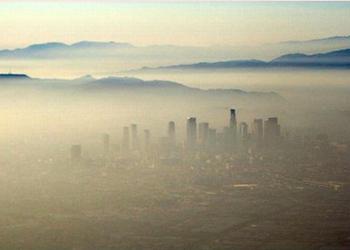
TORONTO, Ontario, Canada, December 9, 2013 (ENS) – Scientists from the University of Toronto have identified a chemical in the atmosphere that appears to be a long-lived greenhouse gas that breaks all other chemical records for its potential to affect the climate.
The chemical – perfluorotributylamine, or PFTBA – is the most radiatively-efficient chemical found to date.

Radiative efficiency describes how effectively a molecule can affect climate. This value is then multiplied by its atmospheric concentration to determine the total climate impact.
PFTBA is produced by humans, it does not occur naturally.
PFTBA has been in use since the mid-20th century for applications in electrical equipment. It is used in thermally and chemically stable liquids marketed for use in electronic testing and as heat transfer agents.
There are no known processes that would destroy or remove PFTBA in the lower atmosphere, so it has a very long lifetime, possibly hundreds of years. It is destroyed in the upper atmosphere.
“Global warming potential is a metric used to compare the cumulative effects of different greenhouse gases on climate over a specified time period,” said Cora Young who was part of the University of Toronto Department of Chemistry team, along with Angela Hong and their supervisor, Professor Scott Mabury.
Different compounds stay in the atmosphere for different lengths of time, which determines how long-lasting the climate impacts are.
Carbon dioxide, CO2, is used as the baseline for comparison since it is the most important greenhouse gas responsible for human-induced climate change.
“PFTBA is extremely long-lived in the atmosphere and it has a very high radiative efficiency; the result of this is a very high global warming potential,” said Hong.
“Calculated over a 100-year time frame, a single molecule of PFTBA has the equivalent climate impact as 7,100 molecules of CO2,” she said.
The research was funded by the Natural Sciences and Engineering Research Council of Canada and was published online at Geophysical Research Letters on November 27, 2013.
Copyright Environment News Service (ENS) 2013. All rights reserved.
